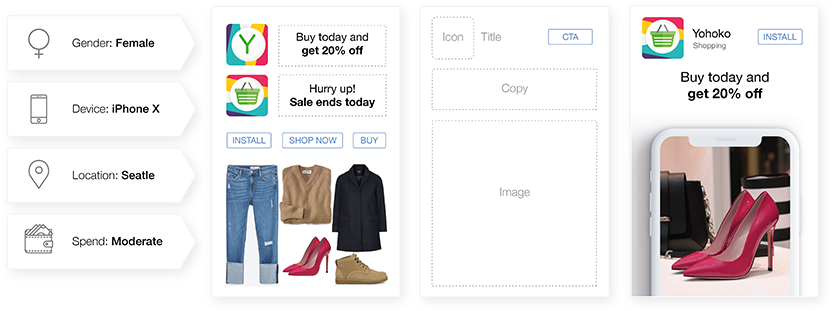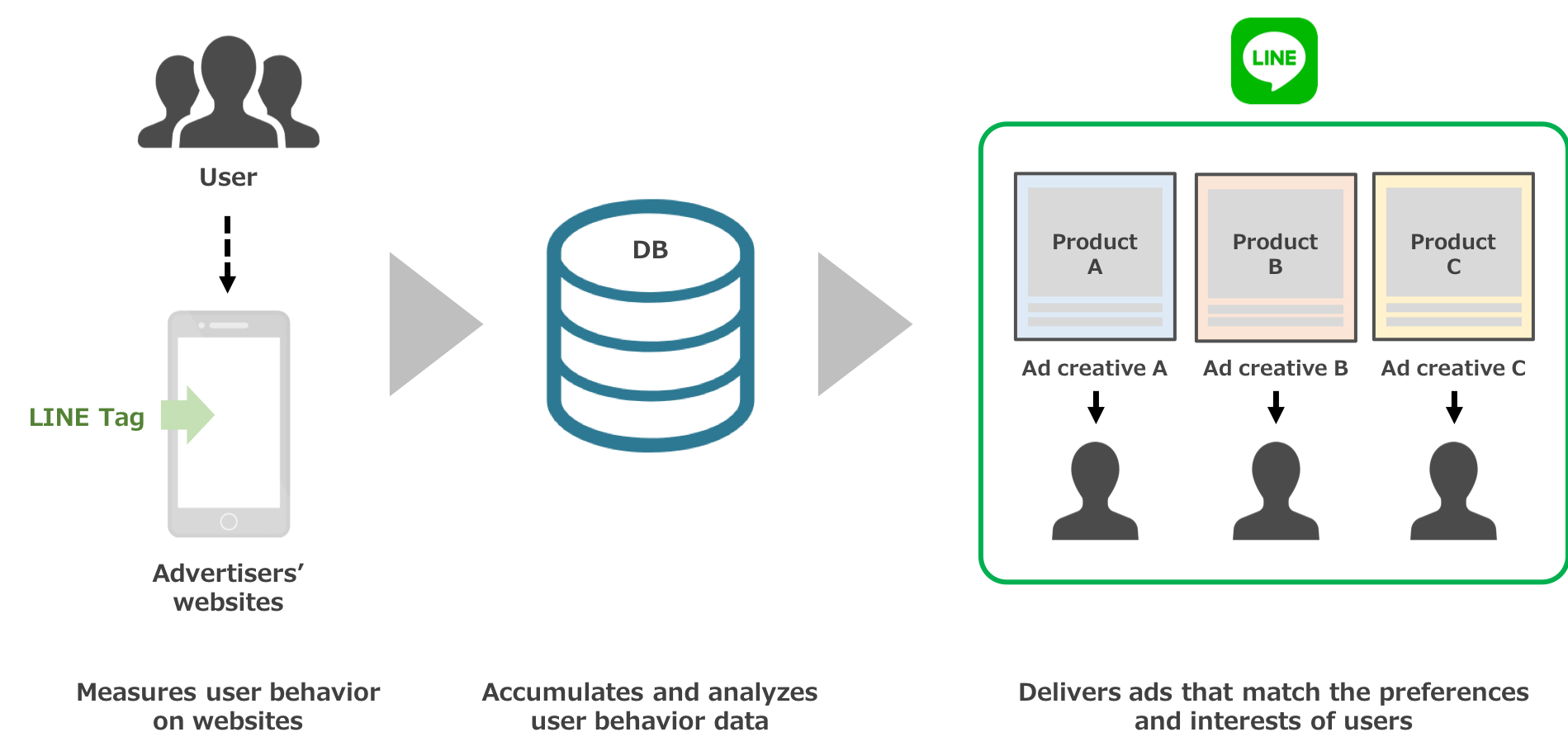As the internet continues to mature and digital marketing tactics continue to evolve, marketing and advertising have become incredibly personalized.
This personalization has created an expectation in consumers that ad experiences and marketing sequences need to be tailored specifically to them, addressing their interests and solving problems they are facing.
This common practice is producing fantastic results.
When brands make video content hyper-relevant to their prospects, it creates an experience that is not only timely but also builds a human relationship between the prospect and the brand.
Contextual data and marketing campaigns are the new norms and the biggest brands have figured this out.
What Are Dynamic Video Ads?
Dynamic video advertisements are ads that adapt to the end-viewer, giving them an impactful experience that is scalable and more engaging.
Creating dynamic video ads that use multiple versions of ad copy and creative that can be targeted to each segment of their audience is generating great results for brands.
Here’s a quick example of what a dynamic video ad look like:
How can you ensure that you are using this dynamic content and creative effects to create engaging video content in your campaigns? What are the best practices to follow to make sure you are doing this correctly?
To maximize your success, today we’ve put together four proven steps that will help ensure your dynamic video marketing campaigns are successful.
Establish The Goals Of Your Campaign
Before launching any kind of campaign, it is important to have a firm idea of what you want the outcome to be.
What’s the goal of your campaign? For instance, are you looking for conversions? New top of funnel leads? Brand exposure? More social media followers?
It’s important to remember that the goals you set must be realistically achievable. There also has to be numbers assigned to goals.
Whether your goal is monetary (conversions), or based on a number of followers (social growth), etc. the key thing is that it has to be realistic and measurable.
Next, you want to make sure that if you reach these goals, the goals lead to the overall growth and success of your business.
Need some inspiration to set key performance indicators for your social dynamic ads? Here’s a quick overview of all the different things that Facebook’s dynamic ads offer, as well as, what can be measured:
Whatever metrics you set forth, be sure to ask yourself, “If I attain this goal, how will this help with the growth and wellbeing of my business?”
Every goal you put forth for your campaign needs to ultimately directly relate to the growth of your company and the addition of customers for your brand.
Segmentation Is Critical
It probably goes without saying, but because your campaigns are utilizing “dynamic video”, you have to look at your audience and segment it, honing in on specifics of buyers personas to make sure you can personalize video going to each persona type.
The first thing you want to do is make sure you have your buyer personas properly examined. Who are your ideal clients? What are their interests? What challenges are they facing? These are the critical first questions you must ask yourself.
Next, you want to examine each buyer persona’s behaviors/activities. Remember, each social platform is contextual and you have to create content to work within the framework of each of those platforms.
Your buyer personas for instance that hang out on YouTube are going to absorb and interact with content differently than your buyer personas that tend to hang out on Facebook or LinkedIn for example.

Your content needs to be contextually designed to take these behaviors into consideration.
Within your buyer personas, if you find your audience is still too broad, you might consider drilling down and segmenting based on things like demographics (e.g. age, gender, profession), location, or interests. You can create dynamic video content to address each of these segmentations.
For example, if your brand is a clothing company that makes denim jeans, there are tons of variations of jeans.

If you run one type of ad, with one type of person that wears a particular style of jeans, a single video approach to this campaign would never work out for a group that can be very diverse.
Instead, you would take your audience and segment it. For instance, segment by gender, then by age and profession.
You could create varying pieces of content that would target these groups of people, showing real-life examples of others they can relate to, wearing your jeans and living lifestyles similar to theirs, to drive home your brand message, engage them and get them to want to go to your website to purchase your jeans.
Dynamic Video Content Is Multi-Layered
When you are creating dynamic video for your marketing campaigns, you need to break things down into pieces that are specifically personalized for your target audiences.
This includes both imagery and messaging. There is a process for building dynamic creative. You first start with the base layer, which is the main video that your campaign is derived from.
Next, you’ll decide the specific messaging you want to target each segment of your audience.
What interest do they have or problems they want to solve that they would like to specifically read or hear about?

Script out the various scripts for your various target groups and test them against people to make sure they are getting the attention and engagement you are expecting. By understanding what is popular and relevant to each segment of your audience, your campaign design will be optimized and your campaign will generate results.
Utilize Programmatic Video Marketing Tools
The final challenge you are facing in designing your dynamic video marketing campaign is figuring out how to handle all these segmented layers of your video campaign and launch it in an orderly, scalable fashion.
You need the ability to launch a single campaign where the content compiles dynamically and the results can be generated to show you how each segment of your campaign is performing. Enter programmatic video marketing tools.
There are a number of programmatic tools that allow you to not only plan and create your layers but automatically mix and match them according to various data sets and segments. This is one of the most important steps in dynamic creative optimization.
There Is No “One-Size-Fits-All” Approach
By now, the brands that are growing the fastest and doing the most business have figured out that there is no one-size-fits-all approach to marketing anymore.
With increased online competition, ad fatigue and a general lack of attention on the part of the consumer, it is up to the brand to cut through the noise and deliver personalized experiences that engage potential clients and make them pay attention.
Touching your ideal customer in the right way at the right time is critical to the success of your campaign. Dynamic Video Marketing is a great tool your brand can keep in their arsenal to help you achieve this.
Are You Investing in Dynamic Video Marketing?
What are you doing to ensure the success of your personalized video advertisements? Have you started looking at tools (like Vedia) to help you scale your campaigns even further? Let us know in the comments below.


1 Comment
Pingback: How Video Personalization is Changing Different Industries | Vedia Blog